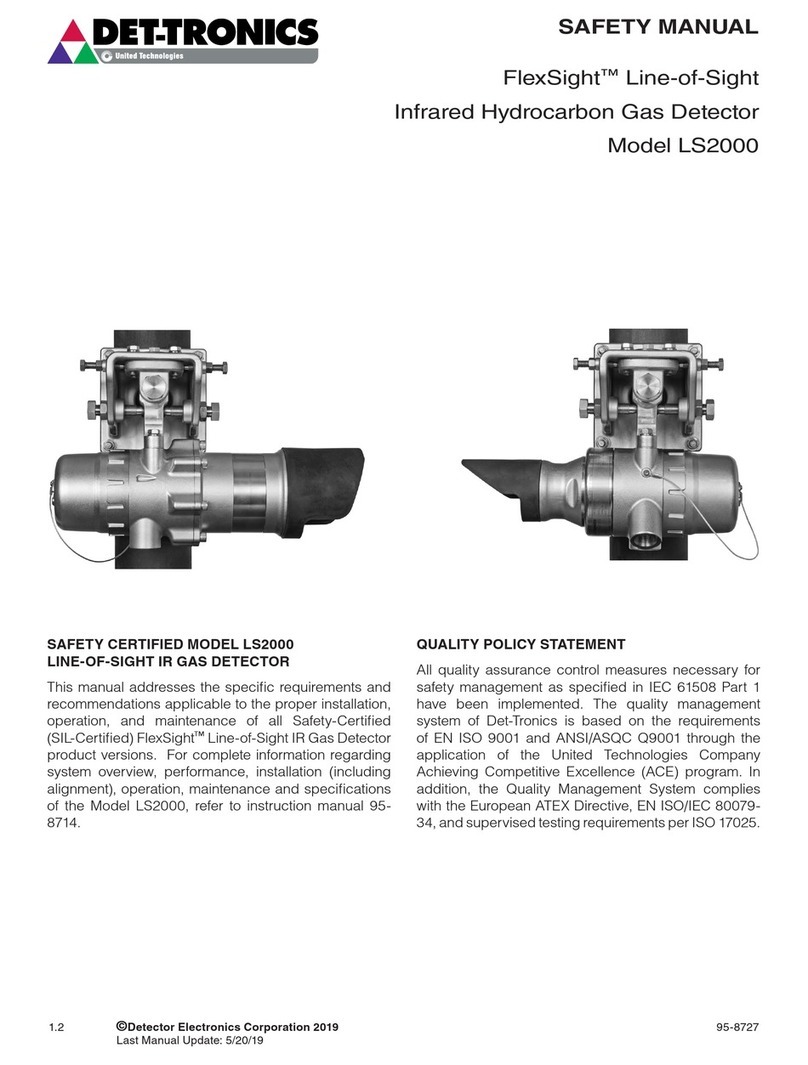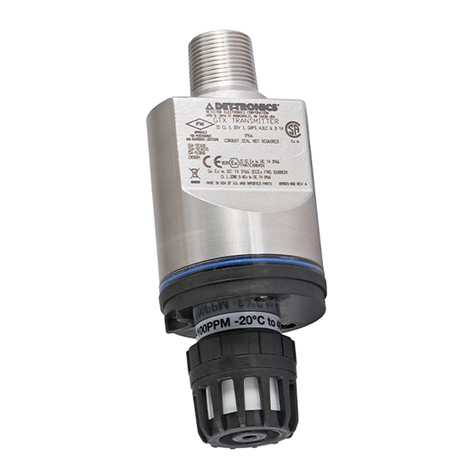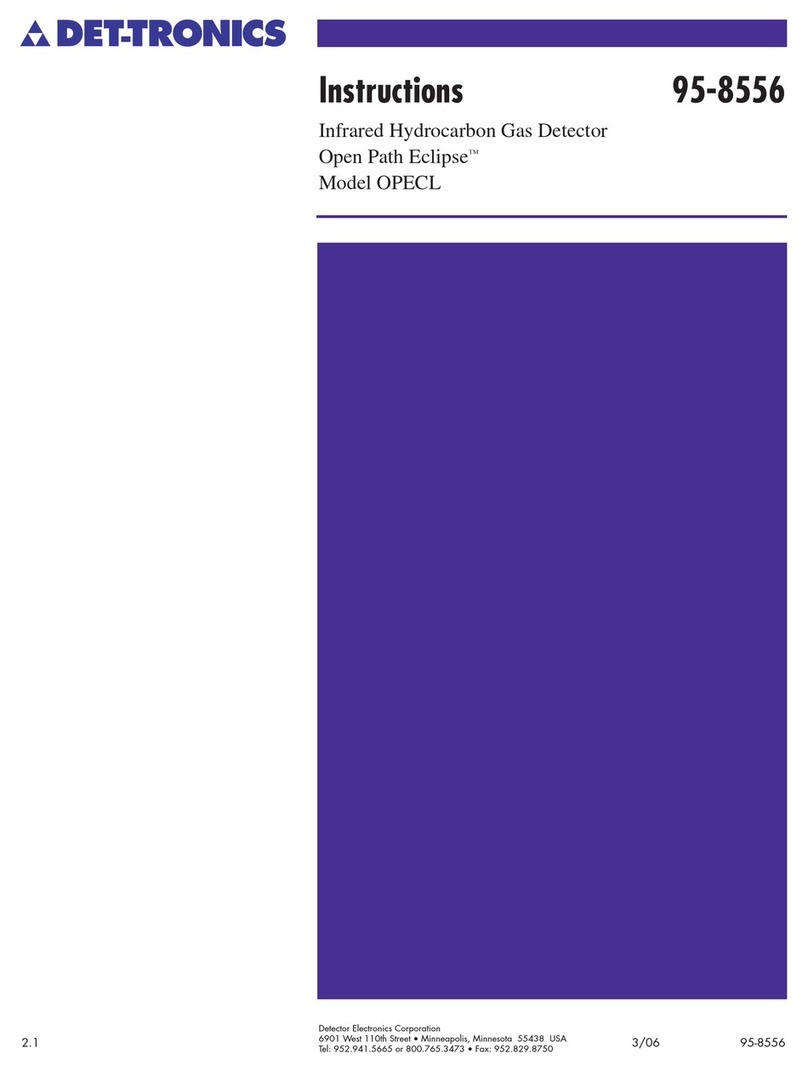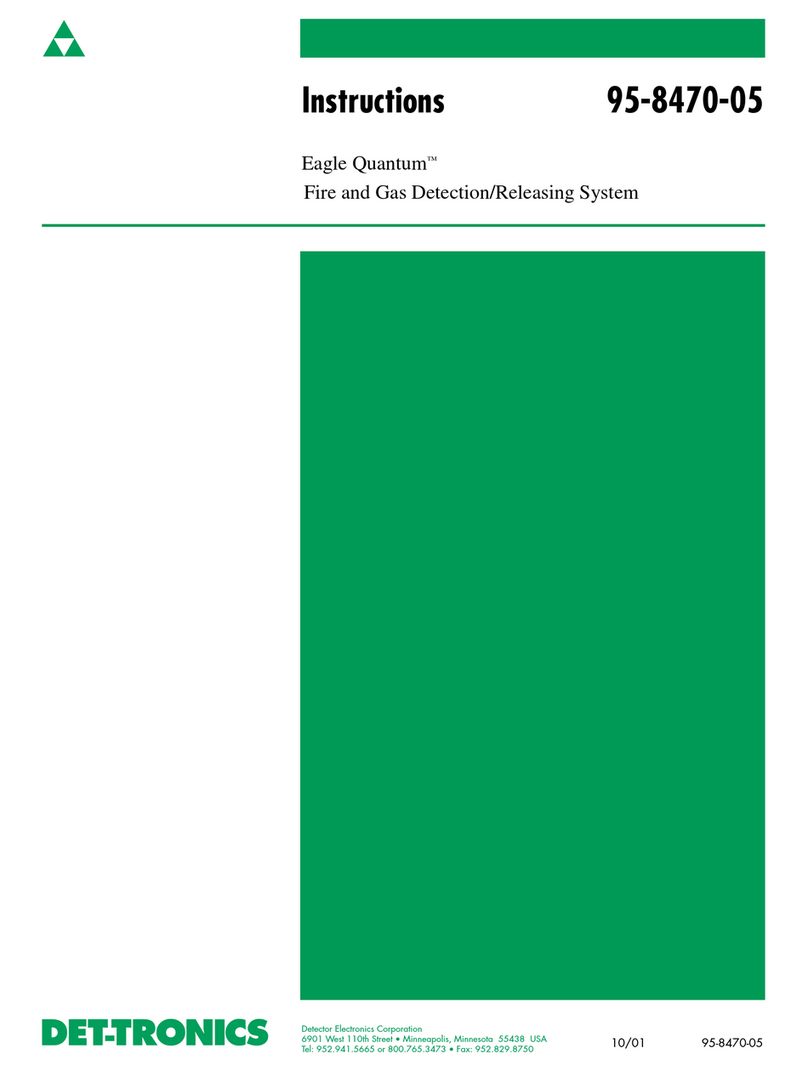
795-86763.1
Calibration Gas Port Cover
A protective cover for the calibration gas injection port is
provided to ensure that contaminants are not accidently
introduced into the Eclipse optics. Ensure that this cover
is properly installed over the port when calibration is not
being performed.
NOTE
Failure to install the calibration gas port cover
or the use of a damaged cover may result in
nuisance faults and require cleaning the detector
optics.
24 VDC POWER SUPPLY REQUIREMENTS
Calculate the total gas detection system power
consumption rate in watts from cold start-up. Select a
power supply with adequate capability for the calculated
load. Ensure that the selected power supply provides
regulated and filtered 24 Vdc output power for the entire
system. If a back-up power system is required, a float-
type battery charging system is recommended. If an
existing source of 24 Vdc power is being utilized, verify
that system requirements are met.
WIRING CABLE REQUIREMENTS
Always use proper cabling type and diameter for input
power as well as output signal wiring. 14 to 18 AWG
shielded stranded copper wire is recommended.
Always install a properly sized, master power fuse or
breaker on the system power circuit.
NOTE
The use of shielded cable in conduit or shielded
armored cable is required. In applications where
the wiring is installed in conduit, dedicated conduit
is recommended. Avoid low frequency, high
voltage, and non-signaling conductors to prevent
nuisance EMI problems.
CAUTION
The use of proper conduit installation techniques,
breathers, glands, and seals is required to prevent
water ingress and/or maintain the explosion-proof
rating.
POWER WIRING SIZE AND MAXIMUM LENGTH
1. The Eclipse detector must receive 18 Vdc
minimum to operate properly. 24 Vdc minimum is
recommended.
2. Always determine voltage drops that will occur to
ensure that 24 Vdc is delivered to the Eclipse.
3. Normally, nothing smaller than 18 AWG (0.75 mm2
)
is recommended by Det-Tronics for Eclipse power
cabling.
Wire size requirements are dependent upon power
supply voltage and wire length.
The maximum distance between the Eclipse detector
and its power supply is determined by the maximum
allowable voltage drop for the power wiring loop. If the
voltage drop is exceeded, the device will not operate.
To determine the maximum power loop voltage drop,
subtract the minimum operating voltage for the device
(18 Vdc) from the minimum output voltage of the power
supply.
To determine the actual maximum wire length:
1. Divide the maximum allowable voltage drop by the
maximum current draw of the Eclipse (0.31 A),
2. Divide by the resistance of the wire (ohms/foot value
available in wire manufacturer’s specification data
sheet),
3. Divide by 2.
For example: Consider an installation using 18 AWG
wiring with a power supply providing 24 Vdc.
Power supply voltage = 24 Vdc,
Eclipse minimum operating voltage = 18 Vdc
24 – 18 = 6 Vdc
Maximum Voltage Drop = 6
Maximum Current = 0.31 A
Wire Resistance in Ohms/Foot = 0.006523
6 ÷ 0.31 ÷ 0.006523 ÷ 2 = 1484 feet
NOTE
For CSA/ATEXIECEx Certied systems using HART
communication, the maximum wiring distance is
2000 feet.
Maximum Voltage Drop
÷
Maximum Current
÷
Wire Resistance in Ohms/
Foot
÷
2
Maximum Wire Length =
Maximum Power Loop
Voltage Drop =
Power Supply Voltage
Minus
Minimum Operating Voltage
































